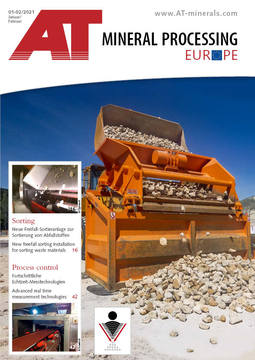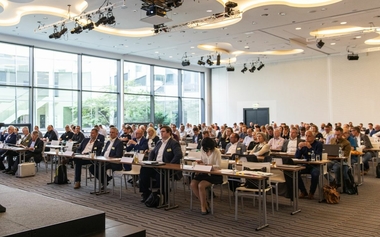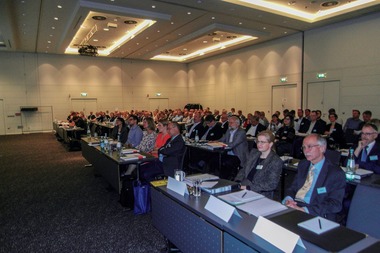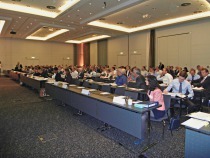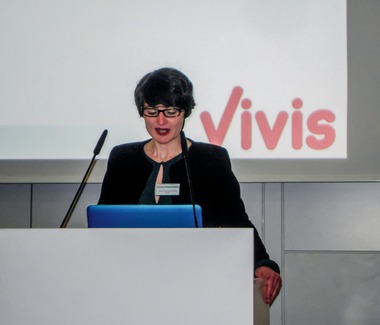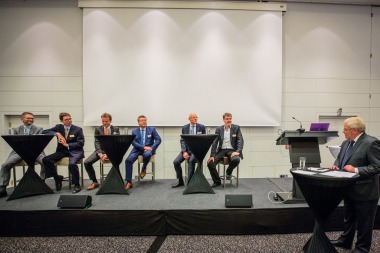The Berlin conference on “Mineral byproducts and waste”
as a webevent
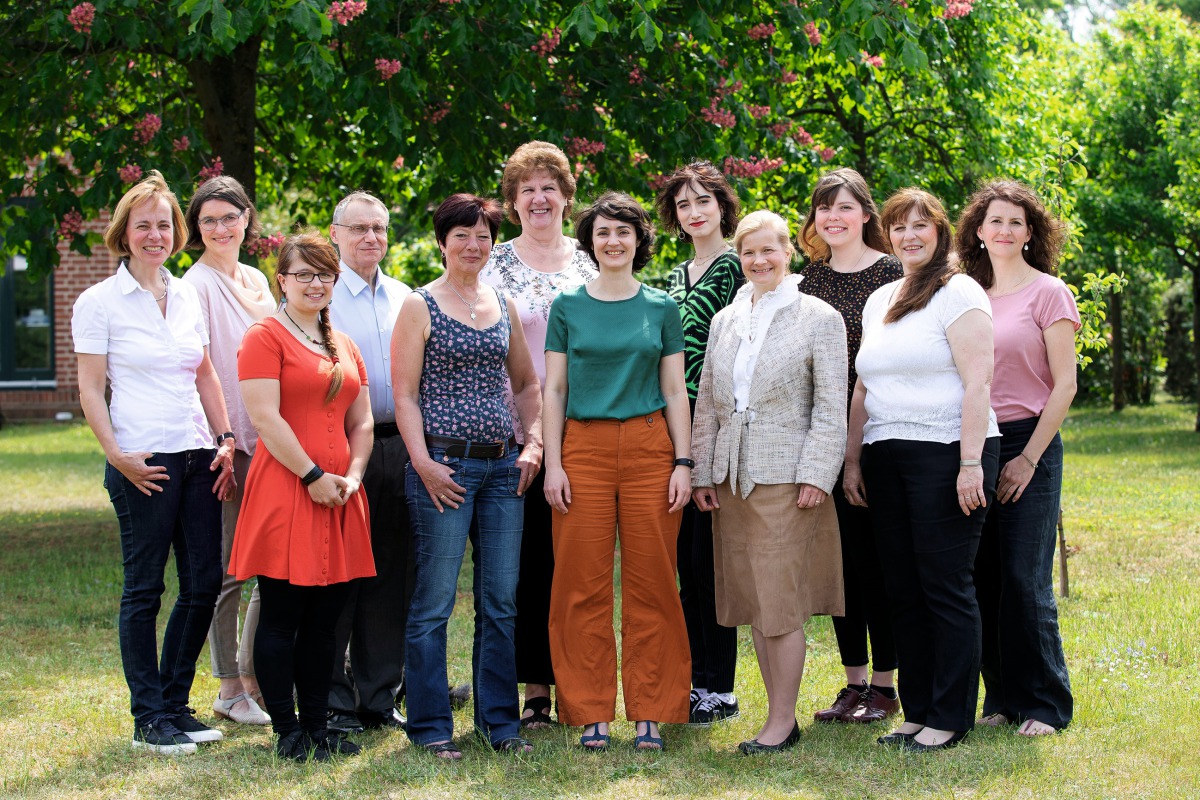 The team of Thomè-KozmienskyVerlag GmbH, Neuruppin; first row: 3rd from left: CEO M. Sc. Elisabeth Tomé-Kozmiensky, 2nd from right: Dr.-Ing. StefanieThiel, Program Coordinator
The team of Thomè-KozmienskyVerlag GmbH, Neuruppin; first row: 3rd from left: CEO M. Sc. Elisabeth Tomé-Kozmiensky, 2nd from right: Dr.-Ing. StefanieThiel, Program Coordinator
© Sera Z. Curc
The morning session of the plenary event on the first day of the conference was devoted to the topics of the circular economy and climate protection. In his impressive introductory paper on “Climate protection must think internationally”, Prof. Dr. Ernst Ulrich von Weizsäcker, Honorary President of the Club of Rome, made the connection, citing numerous facts of climate protection, mineral by products and waste. He warned urgently against failing to do anything about climate changes. “It doesn’t achieve much, if Germany abandons coal, but another 600 new coal-fired plants are constructed around the world! The only political option to avert the climate catastrophe is the so-called ’budget concept’,” Prof. Weizsäcker is convinced (the same budget of CO2 emissions per capita should be distributed fairly to all countries of the world [editor’s note]).
Other papers dealt with the contribution of the valorisation of domestic-refuse incineration ash and the metallurgical by products, and of landfills, to climate protection, but also the never-ending story of the Substitute Building Materials Ordinance and, thus, the Umbrella Ordinance.
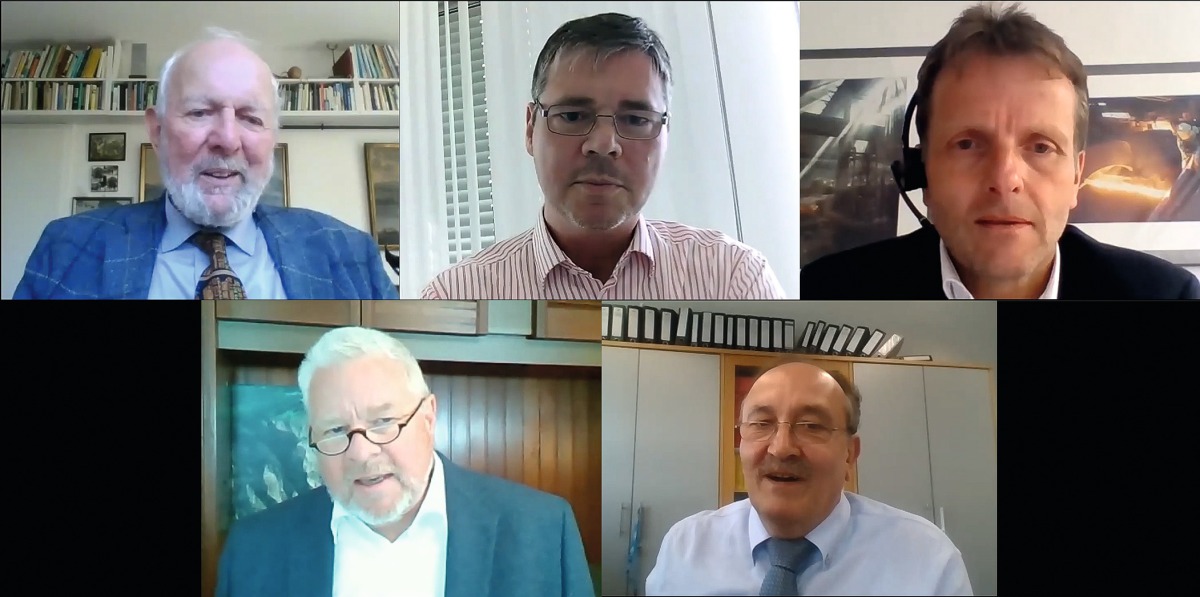 The participants in the panel discussion; top row, from left: Prof. Dr. Ernst-Ulrich Weizsäcker, Dipl.-Ing. Carsten Spohn; Thomas Reiche, lower row from left: Journalist Joachim Mahrholdt, Dipl.-Verww. Hartmut Haeming
The participants in the panel discussion; top row, from left: Prof. Dr. Ernst-Ulrich Weizsäcker, Dipl.-Ing. Carsten Spohn; Thomas Reiche, lower row from left: Journalist Joachim Mahrholdt, Dipl.-Verww. Hartmut Haeming
© Thomè-Kozmiensky Verlag GmbH
The live panel discussion also focussed on the topics of “Climate relevance and circular economy”. Chaired by journalist Joachim Mahrholdt, of Berlin, Prof. Dr. Ernst Ulrich von Weizsäcker, Dipl.-Verww. Hartmut Haeming, chairman of InwesD, Cologne, and CEO Thomas Reiche, Institute for Building Materials Research, Duisburg, along with Dipl.-Ing. Carsten Spohn, ITAD Duesseldorf, conducted their virtual discussion. The technological equipment functioned excellently, also enabling comments, questions and answers by the conference participants.
During the afternoon session, the speakers examined the implementation of the EU Circular Economy Package in the German Circular Economy and Waste Act, in particular with respect to the legal significance for the management of mineral byproducts and waste. There was, in each case, a live round of discussions following the individual papers, and involving the speakers, the chairpersons and the public, appearing on the screens.
During the second day of the conference, the video event was conducted, traditionally, in the four following sections:
Residues from the incineration of waste
Byproducts from metallurgy and mining residues
Building waste (mineral fibres, tar-containing road demolition waste, asbestos)
Landfills (market situation and landfill needs, mineral waste from the demolition of nuclear facilities, landfill technology and climate protection)
In the individual specialists addresses, the new preparation and plant technologies, and also analytical methods, eco-balance analyses and the production of recycling products were discussed. Attention was also drawn to the significant difficulties in the recycling of new products, such as textile-reinforced concrete, composite materials and asbestos, as well as PCB-contaminated material masses, which the political world usually prefers to ignore. There was also a plethora of information, which was published on the internet or as livestreams, available for the spectators.
It is true that a webcconference can never replace a “live” congress, but the event can nonetheless be considered a success. The excellent organisation and strict chronological procedure made it possible to switch between the individual sections without difficulty during the second day of the conference. The potentials for exchange of opinion in the conference breaks and at the convivial evening event were, of course, sorely missed. But, nonetheless: a major “Thank you!” to the organiser’s team – better a slightly complex and, for participants, somewhat more strenuous video conference than abandoning the event completely. The participants were able, overall, to get information on the latest state-of-the-art. In addition, the majority of the papers have been included and are available in the conference proceedings, in the specialist publication “Mineral byproducts and waste 7 – Ash, slag, dust and building residues”, Thomé-Kozmiensky Verlag GmbH, Neuruppin 2020, ISBN 978-3-944 310-52-4.
The next Berlin conference on “Mineral byproducts and waste” will take place – hopefully again in conventional form – on September 13 – 14, 2021 in Berlin.
www.vivis.de
Author:
Dr. Brigitte Hoffmann; Consulting Kreislaufwirtschaft/Umweltschutz, Oberschöna

